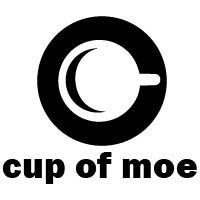We may earn money or products from the companies mentioned in this post.
The 1983 sci-fi thriller “Brainstorm” stars Christopher Walken and Natalie Wood. This forward-thinking science fiction romp presents virtual reality (VR) in its early stages and evolution. Although the Douglas Trumbull-directed film isn’t perfect, it’s a neat look at VR with superb acting, a magnificent score, and excellent effects.
A scientific group led by Michael Brace (Walken) and his estranged wife Karen (Natalie Wood), along with Michael’s colleague Lillian (Louise Fletcher) invents the computer and brain interfacing device. Their creation not only allows for virtual reality experiences but allows feelings and sensations to be recorded on tape. In this way, others may experience those as well.
After their initial success, CEO Alex Terson (Cliff Robertson) instructs Brace et al to offer a demo of their device with the intent to secure financial backing. It’s during this exhibition that the group realizes the true power of their device: its ability to record human emotions. Michael uses the device to record memories with emotions, and thereby influence the real world. But whereas Michael employs this as the utility to reconnect with his estranged wife, previous colleague Landan Marks (Donald Hotton) aspires to use it for military applications.
When Lillian suffers a heart attack, she puts on the headset and records her death. Michael later discovers her recorded memories. Eventually, Michael realizes the insidious intent to use his creation for warfare when he uncovers “Project Brainstorm.” As such, Michael and Karen team up to thwart efforts to use their technology to perpetuate the military industrial complex.
“Brainstorm” offers an intriguing and groundbreaking look at VR. There’s an exploration of not only virtual reality experiences but the effects on the user. This manifests in the ability to record emotions as well as memories. I like the way “Brainstorm” touches on humanity’s influence of tech, and the means through which tech shapes humanity. Moreover, “Brainstorm” presents an accurate portrayal of tech advancement. Early in the film, Terson instructs his team to make a smaller version of their helmet. Similarly, a trend in real-world technology is constant innovation in creating smaller devices.
I quite enjoy the helmet design and the effects are top-notch. The 1983 movie has aged pretty well with its fish-eye lens shots and well-crafted animation sequences.Trumbull worked on effects for films such as “2001: A Space Odyssey,” “Silent Running,” and “Blade Runner.” It’s evident that Trumbull understood the genre and he infuses mesmerizing special effects, particularly at the end.
Cinematography is fantastic. The film is set in North Carolina and uses several NC scenes as prominent backdrops. Notably, the Wright Brothers National Memorial plays an important role. Plus, there’s a neat shot of Duke Chapel. Locations even appear futuristic. The Burroughs Wellcome building offers its then high-tech looks as the main office for Michael, Karen, and Lillian. A gorgeous Chapel Hill, NC home with its parallelogram angles and solar panels was used as well.
Acting is phenomenal. Walken lends an inspired performance, and Natalie Wood is captivating in her final cinematic appearance. But it’s Louise Fletcher as Lillian who completely steals the show with a tour de force acting job.
It would be remiss to discuss “Brainstorm” without touching on its superb score. Renowned composer James Horner provides the musical backing which is replete with the timpani Horner became best known for. Horner’s “Brainstorm” soundtrack features elements from his “Wolfen” score. Later, in the 1986 sci-fi hit “Aliens,” Horner continued this trend. But it’s a formula that works.
Unfortunately, “Brainstorm” doesn’t quite end as well as it starts. The finale is admittedly a muddled moment which will leave you wondering “what?” as the credits roll. Michael plays back Lillian’s tape and watches the afterlife playing out, even glimpsing hell for a moment. Departed souls in the form of bioluminescent butterflies flow peacefully into heaven. Though the effects hold up fine, this sequence falls flat in lacking the poetry of similar scenes like the end of “2001: A Space Odyssey.”
Still, it’s tough to hold the abrupt and admittedly cheesy, ending against the movie. Wood’s tragic and mysterious death led production to halt. Eventually, Trumbull rewrote the script and used Wood’s younger sister as a stand-in for her remaining shots.
I especially enjoy how “Brainstorm” probes the relationship between tech and humanity, presenting complex concepts like computer-brain transference. “Brainstorm” may not carry the legacy of sci-fi flicks like “Blade Runner,” “Alien,” and “The Matrix.” However, its stellar cinematography, acting, score, and effects plus forward-thinking portrayal of tech make this 1983 movie a smart, lasting thriller.
This post may contain affiliate links. We are a participant in affiliate programs such as the Amazon Services LLC Associates Program, an affiliate advertising program designed to provide a means for us to earn fees by linking to Amazon.com and affiliated sites. However, all products are thoroughly tested and reviews are honest and unbiased.


